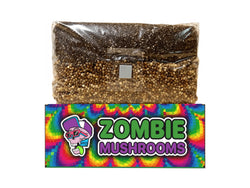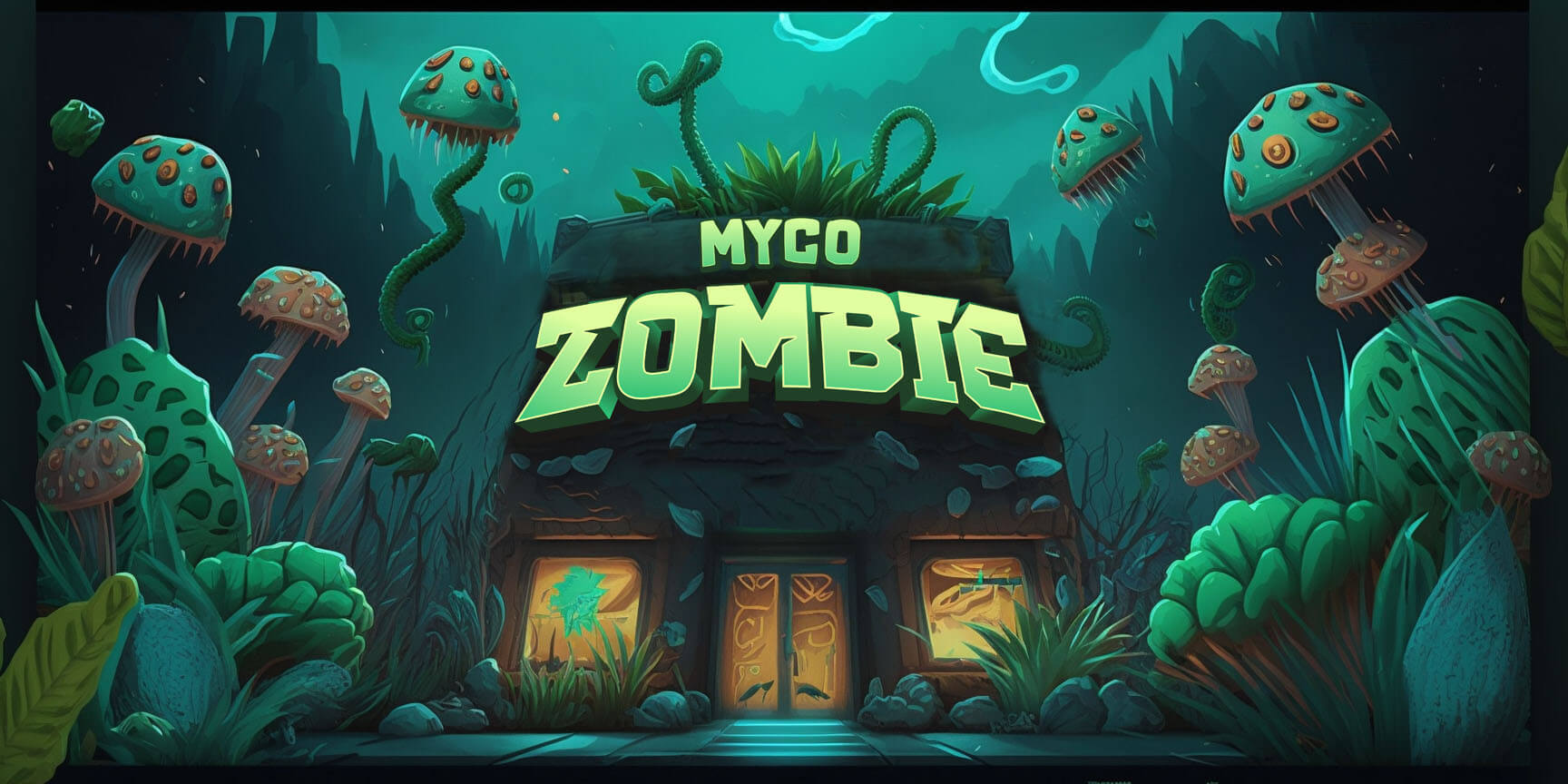⬇️ Prefer to listen instead? ⬇️
- Straw is the easiest and fastest material for beginners growing oyster mushrooms.
- Wood-based materials like sawdust and logs give you good mushrooms but take longer for the mycelium to grow over them.
- Coffee grounds and coconut coir are good for the environment and can give good amounts of mushrooms if you add other things.
- Compost and manure materials give high production but need careful work and must be kept clean.
- Making sure your material is sterile or pasteurized is very important no matter what you use.
If you're getting into mushroom growing — whether in your backyard, kitchen, or farm — the substrate you pick is one of the most important decisions. A mushroom substrate is the material that feeds, supports, and gives water to your mushrooms. Choosing the best material for mushrooms can mean you get lots of mushrooms or not many. This guide tells you what you need to know to pick the right material for your mushrooms and what you want to achieve.
What Does Mushroom Substrate Actually Do?
A mushroom substrate isn't just "soil" or filler. It's the main thing you need for growing mushrooms. Think of it like a home and food supply for your mushrooms. Here's what it mainly does
- Nutritional support: Materials give carbohydrates, amino acids, minerals, and nitrogen — the food mycelium needs to grow and make mushrooms.
- It holds water: Mushrooms are up to 90% water. The material holds water to keep things moist while the mycelium grows and makes mushrooms.
- It gives structure: Fibers or small pieces in the material give the mycelium a place to grow everywhere. This helps it form a thick layer and grow more.
- It lets air move: The right material lets the mycelium get oxygen and get rid of carbon dioxide easily.
Not all mushrooms need the same place to grow. This is why picking the right material is important.

What Makes a Good Mushroom Substrate?
Not all organic stuff works for growing mushrooms. Good material for mushrooms has a few things in common
Nutrient Balance
Mushrooms break down organic stuff. Good material has a carbon to nitrogen ratio of about 25 to 30 parts carbon for every 1 part nitrogen. This is especially true for mushrooms that like wood, like shiitake or lion’s mane. Too much nitrogen can help bacteria grow. Too little can stop the mushrooms from growing well.
Moisture Retention
The material should hold water but not get too wet. Good moisture is usually 60 to 75%. If you squeeze a handful, you should get a few drops, but it shouldn't drip a lot. This makes sure the mycelium doesn't dry out or get too much water.
Airflow and Structure
Your material shouldn't be packed down tight. Fine stuff can keep air away from the mycelium if you don't get it right. Good air movement stops too much carbon dioxide from building up and helps the mycelium grow fast and healthy.
pH Balance
Most mushrooms you can eat like a pH that's a bit acidic to neutral, from 6.0 to 7.0. However, some types, like Agaricus bisporus, grow well in compost that's a little alkaline.
Cleanliness
Good material needs to be free of bad germs, molds, and bugs. This means you have to pasteurize or sterilize it. Which one you do depends on how much food is in the material.
These things affect how well your material works, how fast the mycelium grows over it, and how many mushrooms you get in the end.

Straw: Simple, Effective, and Beginner-Friendly
Many people say straw is the best material for new growers. This is especially true for growing oyster mushrooms (Pleurotus ostreatus). Straw comes from the stalks of grains like wheat or rye. It has fibers, isn't packed tight, and holds water well. It also lets air move through it easily.
Why use straw
- Easy to get: You can find it easily at feed stores or local farms.
- Not expensive: It doesn't cost much, even if you're growing a lot.
- Grows fast: Mycelium can cover the straw in 5 to 10 days after you add it. Oyster mushrooms grow quickly.
Things to watch out for
- Not much food: Straw is mostly just cellulose and lignin. Adding bran or gypsum can make you get a lot more mushrooms.
- Can get dirty easily: Straw that hasn't been treated has bacteria and fungi in it. You have to pasteurize it. Soaking it in hot water at 160 to 175°F (70 to 80°C) is very important.
- Falls apart: Straw breaks down fast. Usually, you only get 2 to 3 harvests of mushrooms from it.
How to get it ready
- Chop it into 2 to 5 inch pieces. This gives more surface area.
- Put it in hot water for an hour. 'Bucket Tek' is a common way to do this.
- Drain the water, let it cool down, and then add the spawn. Do this in a clean place.
Straw is one of the easiest ways to try growing mushrooms at home. It doesn't cost much to start.

Sawdust and Wood Logs: Perfect for Wood-Loving Mushrooms
Some fancy and medicinal mushrooms, like shiitake, lion’s mane, reishi, and maitake, need material made from wood. They naturally grow on old, decaying hardwood. Doing the same thing gets you the best results.
Sawdust Blocks
Sawdust comes from fine hardwood pieces. You can put it in bags and add wheat or rice bran to make it have more food. This gives you a lot of mushrooms.
- You get more mushrooms when you use this inside where you can control things.
- Grows fast when you add things to it. But this means you have to sterilize it, not just pasteurize.
- Works best for growing lots of mushrooms inside in bags or containers.
Fresh Logs
Using fresh-cut hardwood logs (oak, maple, beech) is a more old-fashioned way. You don't need to pasteurize them.
- Growing on logs can give you mushrooms for up to 5 years. But it takes time and you need space.
- Use plug spawn. These are wooden dowels with mycelium. Put them in holes you drill and seal the holes with wax.
Growing on logs is like growing in nature. It's much better for the environment, but it's slower.

Compost: High Yields for Button Mushrooms
Compost is the usual material for growing button mushrooms in large amounts (Agaricus bisporus). It's usually a mix of straw, horse or chicken manure, gypsum, and urea. You have to manage it through different heating and aging steps.
Good things about it
- Has a lot of food in it. Great for getting many mushrooms at once.
- Uses old organic waste. This helps farming be better for the environment.
- You can get up to 25 pounds per square foot in the best conditions when growing for sale.
Hard parts
- You have to carefully prepare it first at high heat (55 to 70°C) to kill bad germs.
- Then it has to sit for a while to lower the ammonia to levels that are okay.
- You need to be very careful and keep things clean. This works best for people who have grown mushrooms before or places that grow them for sale.
It takes a lot of work, but you get a lot of mushrooms.

Manure-Based Substrates: Nutrient-Packed but Odorous
Mixing old horse or chicken manure with straw makes a strong material for Agaricus mushrooms. The manure adds nitrogen and helpful germs. But it smells strong and can get dirty easily if you don't handle it right.
Good points
- Has lots of small and large nutrients. This helps mushrooms grow strong.
- Uses farm waste again. This helps with growing in a way that's good for the environment.
- People growing a lot use this a lot in farming. It works well.
Bad points
- Getting it ready smells bad and can take a lot of work. You need to compost it right and pasteurize it.
- You can get diseases and bugs. This includes little flies, molds, or bad bacteria.
- You should use it outside or in places with good air flow.
It's a good choice if you want to be good to the environment and get a lot of mushrooms. Just be ready for the smell.

Coffee Grounds: For the Urban Grower
Used coffee grounds are easy to get for free and have lots of nitrogen. People who grow in cities and can't get straw or logs often use them to grow oyster mushrooms in small places.
Why they work
- Lots of nitrogen makes the mycelium grow faster.
- Easy and free. Lots of coffee shops are happy to give them to you.
- Helps reuse waste by turning it into food.
Problems
- Can get dirty very easily. They already have living things in them when you get them.
- They can get packed down and stop air from moving if you use them by themselves.
- Don't work well for all mushrooms. It's best to mix them with straw or coir to make the texture better.
Good for the environment in the city, and you get tasty mushrooms. Just make sure to keep it clean and mix it right.

Coconut Coir: Clean, Sustainable, and Moisture-Retaining
Coconut coir comes from the husk of coconuts. It's a good, environmentally friendly thing to add to your material. It holds water like a sponge and is almost sterile when you get it.
Works best for
- Mixing with coffee grounds or straw to grow mushrooms.
- Used as the main material in mushroom growing kits for beginners because it's easy to use.
Good points
- Hardly gets dirty if you add boiling water (like in 'Bucket Tek').
- Holds water very well. It stays at the right moisture without getting too wet.
- Breaks down naturally and you can get more of it.
Bad points
- Has almost no food in it. You have to add something like bran.
- Costs a bit more than farm waste in some places.
Good for people who want to set up their mushrooms and not worry too much about the material.

Grain Substrates: Great for Spawn, Not Fruiting
Materials like rye, millet, corn, and sorghum grains are great for growing more mycelium. But they aren't for growing mushrooms directly (UNLESS YOU ARE USING OUR ZOMBIE ALL IN ONE BAG).
Good things
- Used to make spawn. You use this spawn to start growth on bigger materials like straw or sawdust.
- Has lots of carbohydrates and amino acids.
- It's a great material for mycelium to grow fast on. It makes a strong network ready to start growth on other materials.
Problems
- You have to sterilize it carefully using a pressure cooker at 15 psi for 90 to 120 minutes.
- Can get dirty very easily if it's not even a little bit clean.
- Not good for growing mushrooms straight on it. This is because of the cost and how it feels.
It's very important for anyone growing mushrooms, big or small. It's the first step in making more spawn.

How to Prepare Substrates: Pasteurization vs. Sterilization
Treating your material the right way is a must. It kills off other spores and bacteria that could easily take over your mycelium.
Pasteurization
This works best for materials that don't have a lot of food, like
- Straw
- Coconut coir
- Coffee mixes
Ways to do it
- Hot water soak (160 to 175°F for 1 to 2 hours)
- Lime pasteurization
- Hot fermentation (for composting)
Sterilization
You need to do this for materials that have a lot of food, such as
- Grains
- Sawdust mixes with bran
- Manure mixes (you can pasteurize these, but sterilizing is safer)
You have to sterilize with
- A pressure cooker or autoclave (15 psi)
- 90 to 120 minutes minimum
Sterilizing kills more things. But you need to be very careful and use clean ways after you do it.

Think Sustainable: Recycling Waste Into Mushrooms
People growing mushrooms can use less farm and city waste. They do this by using different materials
- Coffee Grounds — Often used in mushroom kits that make no waste.
- Coconut Coir — You can get more of it, and it breaks down naturally.
- Straw & Manure — These are leftover farm materials that turn into material with lots of food.
- Hardwood Sawdust — Uses waste from lumber mills and turns it into food for good mushrooms.
More people are doing this around the world. Studies show using waste as growing material helps the environment and the economy in local areas.

How to Choose the Best Substrate for You
Picking the best material for your mushrooms depends on a few things
-
What kind of mushroom are you growing?
Oyster mushrooms like straw or coffee. Button mushrooms need compost. Shiitake grows well on wood. -
What's easy to find near you or doesn't cost much?
Use materials from your area, like sugarcane waste, cottonseed hulls, or whatever is easy to get. -
How much work do you want to do?
Straw and coir are easy. Composting manure takes more work. -
How much are you growing?
If it's just for fun, easy and clean is most important. If you're growing to sell, you need to get the same amount every time.
Final Thoughts
Growing mushrooms starts with the right material. What's 'right' depends on what you want to do. Whether you're growing oysters in your kitchen or shiitake logs in your woods, you need to know how mushrooms use the material you give them. This is very important. Start with what's easy to handle, like simple straw or coffee mixes from the city. Then try harder things as you learn more. If you use the right material, keep things clean, and have good spawn, you should get lots of mushrooms that you grew yourself.




